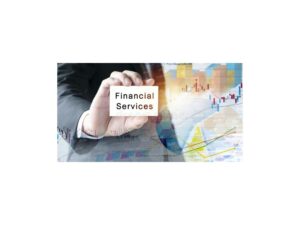As a seasoned financial expert, I delve into the intricate world of default risk in this comprehensive glossary. Understanding default risk is crucial for investors, lenders, and financial institutions alike.
Default risk refers to the likelihood that a borrower will fail to repay a loan or meet their financial obligations. It plays a pivotal role in assessing the creditworthiness of individuals, companies, and even governments.
In this article, I’ll break down the key components of default risk, explore its impact on financial markets, and provide valuable insights on how to manage and mitigate this risk effectively. Stay tuned for expert guidance on navigating the complex landscape of default risk.
Key Takeaways
- Default risk refers to the likelihood that a borrower may fail to repay a loan, impacting creditors and investors.
- Understanding default risk is crucial for assessing creditworthiness and making informed financial decisions.
- Components of default risk include credit history, economic conditions, industry trends, debt levels, and collateral quality.
- Default risk affects financial markets by influencing interest rates, investor confidence, and systemic risks.
- Managing default risk involves diversification, credit analysis, monitoring credit ratings, using derivatives, staying informed about macroeconomic trends, and stress testing portfolios.
What is Default Risk?
Default risk, in the world of finance, is the likelihood that a borrower will be unable to meet its debt obligations. This risk is a fundamental concern for investors, lenders, and financial institutions like banks. When borrowers fail to repay loans or fulfill financial agreements, it can have significant repercussions for all parties involved. Essentially, default risk indicates the possibility that an entity will default on its debt, causing losses to creditors and investors.
Banks and financial institutions assess default risk to determine the creditworthiness of potential borrowers. The risk is generally higher for borrowers with poor credit histories, unstable financial situations, or those operating in volatile industries. Factors that contribute to default risk include economic conditions, industry performance, and individual financial health. By analyzing these factors, lenders can make informed decisions when extending credit.
In essence, understanding default risk is crucial for making sound financial decisions and managing potential losses. It plays a vital role in evaluating the stability and reliability of borrowers in various financial transactions. By recognizing and quantifying default risk, investors and institutions can implement strategies to mitigate this risk effectively.
Importance of Default Risk
Understanding the importance of default risk is crucial in the financial realm. It plays a significant role for investors, lenders, and institutions. Here are key points to consider:
- Risk Assessment: Evaluating default risk allows me to assess the likelihood of a borrower failing to meet their debt obligations. This assessment aids in making informed financial decisions.
- Financial Health: Recognizing default risk helps me gauge the financial health of potential borrowers. This insight enables me to determine their creditworthiness and make prudent investment choices.
- Mitigating Losses: By quantifying default risk, I can implement strategies to mitigate potential losses effectively. This proactive approach is essential for managing risks in various financial transactions.
- Decision Making: Default risk influences my decision-making process when lending or investing. Being aware of this risk factor enables me to adjust terms, set appropriate interest rates, and tailor strategies to minimize risks in financial dealings.
By acknowledging the importance of default risk and incorporating it into financial assessments, I can make well-informed decisions that contribute to overall financial stability and success.
Components of Default Risk
When assessing default risk, it’s essential to consider various components that can impact the likelihood of a borrower failing to meet their financial obligations. Default risk consists of several key factors that play a crucial role in evaluating the overall risk associated with a borrower. Here are some of the primary components to be mindful of:
- Credit History: An individual’s or entity’s past credit behavior and payment history are fundamental elements in determining default risk. A strong credit history indicates a lower risk of default, while a spotty record may raise concerns.
- Economic Conditions: The overall economic environment, including factors like unemployment rates, interest rates, and market stability, can significantly influence default risk. Changes in the economy may impact a borrower’s ability to repay debts.
- Industry Trends: Different industries may have varying levels of default risk based on their stability, growth potential, and susceptibility to market fluctuations. Assessing industry trends helps in understanding the broader risk landscape.
- Debt Levels: The amount of debt relative to income or assets is a critical component of default risk assessment. High levels of debt increase the likelihood of default, especially if a borrower faces financial difficulties.
- Collateral: For secured loans, the quality and value of collateral pledged can impact default risk. Collateral serves as a form of security for lenders in case of default, reducing the overall risk.
By comprehensively analyzing these components of default risk, I can make more informed financial decisions, evaluate the creditworthiness of borrowers, and effectively manage potential risks in my lending or investing activities.
Impact of Default Risk on Financial Markets
Default risk plays a significant role in financial markets, affecting various aspects of the economy.Default rates can impact interest rates in the market as higher default rates often lead to increased interest rates to compensate for the additional risk. In times of economic downturn, default risks tend to rise due to weaker financial conditions for borrowers.
Financial markets are sensitive to default risk, with investors closely monitoring credit ratings and default probabilities to assess the stability of investments. A higher default risk can lead to a decrease in demand for securities issued by riskier entities, causing their prices to fall.
Additionally, default risk can trigger contagion effects in financial markets, where the failure of one entity to meet its obligations spreads to other interconnected institutions. This can lead to liquidity issues, investor panic, and systemic risks that can disrupt the overall stability of the financial system.
Moreover, regulatory bodies closely monitor default risk in financial markets to ensure safeguarding of investors and maintenance of market integrity. By assessing and mitigating default risk, financial institutions can foster a more resilient and stable market environment that promotes sustainable growth and financial security for all participants.
Understanding the profound impact of default risk on financial markets is crucial for making informed investment decisions and effectively managing risks in a dynamic economic landscape.
Managing and Mitigating Default Risk
In managing default risk, diversification is key. I spread my investments across different asset classes and industries to minimize exposure to any single default. Credit analysis is crucial. I assess the creditworthiness of borrowers before investing to gauge their ability to repay debts.
Monitoring credit ratings is essential. I keep a close eye on changes in credit ratings as they indicate shifts in default risk. Regular portfolio rebalancing helps me adjust my investments in response to changing market conditions.
Utilizing derivatives like credit default swaps can provide added protection against default. These financial instruments act as insurance policies, compensating me in case of borrower default.
Staying informed about macroeconomic trends is vital. I analyze economic indicators to anticipate changes that could impact default risk. Stress testing my portfolio allows me to assess how it would perform under adverse scenarios, helping me prepare for unexpected events.
By employing these strategies, I actively manage and mitigate default risk in my investments, ensuring a more secure financial future.
| Fact | Data |
|---|---|
| Diversification | Minimizes exposure to single default |
| Credit Analysis | Assess borrowers’ ability to repay debts |
| Credit Ratings | Indicator of shifts in default risk |
| Portfolio Rebalancing | Adjusting investments to market changes |
| Derivatives | Provide added protection against default |
| Macroeconomic Trends | Analyzing indicators for risk assessment |
| Stress Testing | Assess portfolio performance under adverse scenarios |
Conclusion
Managing default risk in investments is crucial for a secure financial future. Diversification, credit analysis, and monitoring credit ratings are key strategies. Regular portfolio rebalancing and using derivatives like credit default swaps can provide added protection. Staying informed about macroeconomic trends and stress testing portfolios are essential practices. By implementing these strategies, I can actively manage default risk and work towards a more secure financial future.
Frequently Asked Questions
What is default risk in investments?
Default risk refers to the possibility that a borrower will fail to repay a loan or debt obligation. It is a key consideration for investors, as it can lead to financial losses and impact overall portfolio performance.
How can investors manage default risk?
Investors can manage default risk by diversifying their portfolios across different asset classes and industries. Conducting thorough credit analysis, monitoring credit ratings, and regularly rebalancing the portfolio are also essential practices to mitigate risk.
What role do derivatives like credit default swaps play in managing default risk?
Derivatives like credit default swaps can be used by investors to hedge against default risk. They provide added protection by transferring the risk of default to another party in exchange for a premium.
Why is it important to stay informed about macroeconomic trends when managing default risk?
Staying informed about macroeconomic trends is crucial for investors to assess the overall health of the economy and identify potential risks that may impact their investments. By staying informed, investors can make more informed decisions to mitigate default risk.



